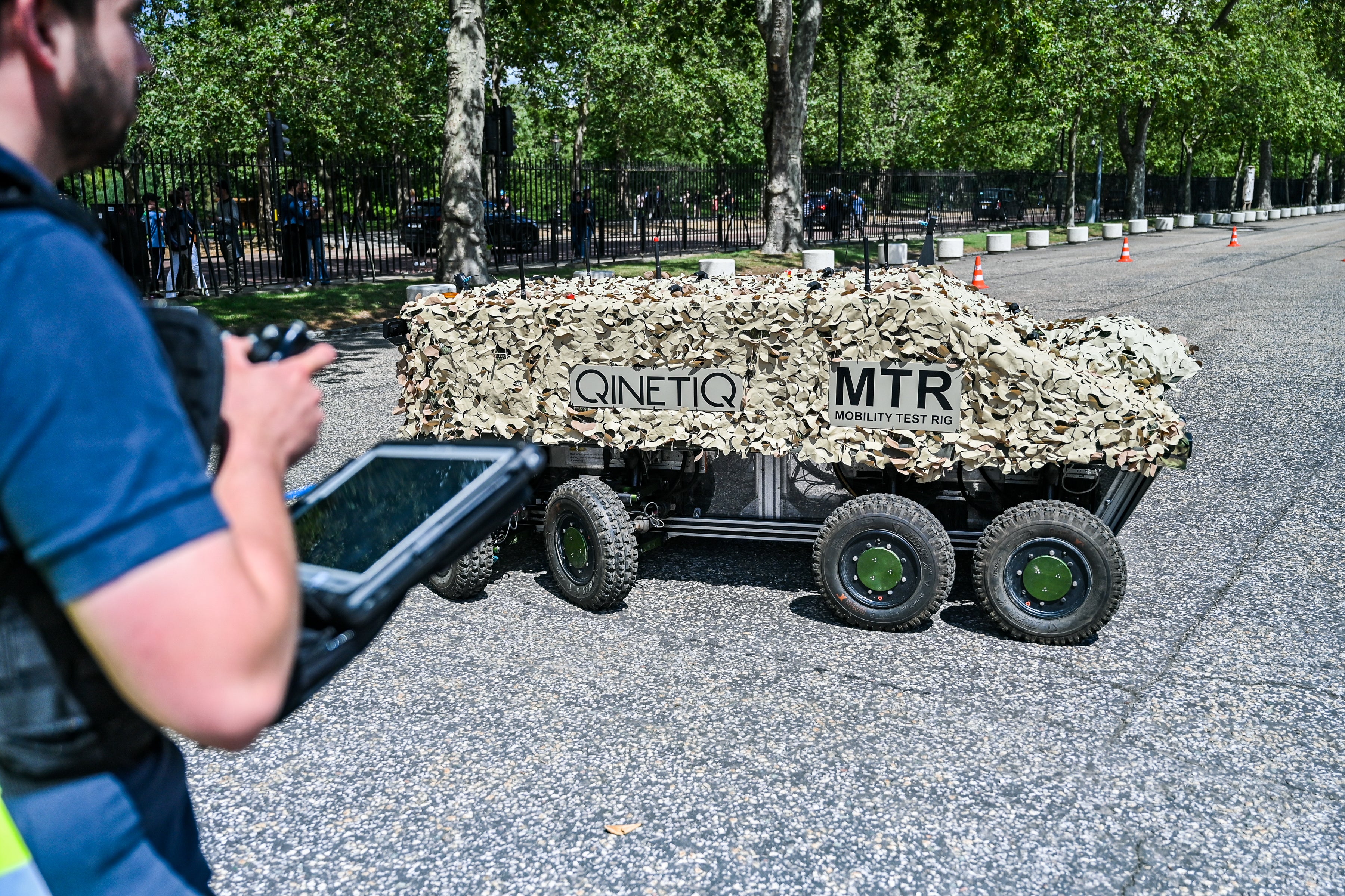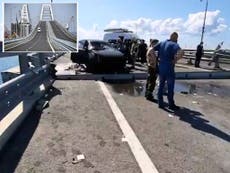A B&Q generator and a commandeered truck: Behind the British Wolfram vehicles helping Ukraine fight Putin
Wolfram vehicles are now standard weaponry for the British military, with possible export orders pending, writes Kim Sengupta


Your support helps us to tell the story
From reproductive rights to climate change to Big Tech, The Independent is on the ground when the story is developing. Whether it's investigating the financials of Elon Musk's pro-Trump PAC or producing our latest documentary, 'The A Word', which shines a light on the American women fighting for reproductive rights, we know how important it is to parse out the facts from the messaging.
At such a critical moment in US history, we need reporters on the ground. Your donation allows us to keep sending journalists to speak to both sides of the story.
The Independent is trusted by Americans across the entire political spectrum. And unlike many other quality news outlets, we choose not to lock Americans out of our reporting and analysis with paywalls. We believe quality journalism should be available to everyone, paid for by those who can afford it.
Your support makes all the difference.The Wolfram armoured vehicle headed for the armoured column coming through the valley and fired salvos from its Brimstone missile system, setting the Russian T-57 tank aflame. Further along the frontline, a rider on an electronic bike was carrying out a lone attack, hitting the convoy at the flank using a Carl-Gustaf Mk4 rocket launcher.
The operation taking place was a military exercise in Lulworth, Dorset – but the tactics and weapons being used were from the Ukraine war. The Wolfram was developed by the British military in the early days of Vladimir Putin’s invasion with an urgent plea for help from Kyiv to counter Russian heavy armour.
Brimstone would have been ideal for the job, but they were launched from advanced warplanes the Ukrainians did not have. After a weekend of looking at the problem, the boffins at the Ministry of Defence came up with the solution – using an office laptop, commandeering a truck and getting a power generator from a B&Q store.
The result was Wolfram, a mobile ground-based platform, with its MBDA missile and a Supacat vehicle which could be used to move around Russian lines to strike at the enemy. It is now standard weaponry for the British military with possible export orders pending and several dozen of the vehicles already in Ukraine.

The electronic bike, supposedly a ‘stealth platform’, is a variation on motorcycles Ukrainian forces have been using on the frontline. Motorcycles were also used against British and Western forces by the Taliban in Afghanistan and insurgents in Iraq.
Wars past and present have been learning blocks for a significant reshaping of the British military, which will be detailed in a Command Paper Refresh being presented to parliament on Tuesday.
The conflict in Ukraine has not only led to innovation through helping an ally, but also learning about adversaries. Russian weapons abandoned or captured there are being taken apart and examined at the government’s science and defence technology centre at Porton Down in Wiltshire.
The government has been accused of not investing enough in defence. Three months ago £5bn was given to the Ministry of Defence to be spread over two years; £3bn of that went to the fleet of nuclear submarines and £2bn went to the army, but only to replace ammunition stockpiles sent to Ukraine, not for the host of other needs. Ministers say that they have found another £300m per annum over a seven-year period through rationalisation.
The army’s total strength is 73,000. To put this in context, a force of fewer than 100,000 is technically not an army, but a self-defence force. In topical terms, the East India Company, Britain’s historical equivalent of Russia’s Wagner Group, had 250,000 men under arms in the 19th Century.
Ben Wallace, who has announced that he will step down as defence secretary at the next reshuffle and leave politics at the next election, insisted that in the modern high-tech age, it is not quantity, but quality and innovation which wins wars.
The aim is the integration of troops with cyber, AI, satellite and space technology. His legacy, said Mr Wallace would be a “more modernised armed forces, more tanks which can have lethal impact on the enemy, ships that are not bubble-wrapped but can actually go out of port. There is no point having an armed forces just for the parade ground”.
He added: “We have created a force for many, many decades, both under the Labour government and the Conservative government, where we focused on numbers and hollowed out behind. That’s not what I’ve ever done as defence secretary. I’ve increased the funding – a significant rise in real-term funding to defence.”

Join our commenting forum
Join thought-provoking conversations, follow other Independent readers and see their replies
Comments